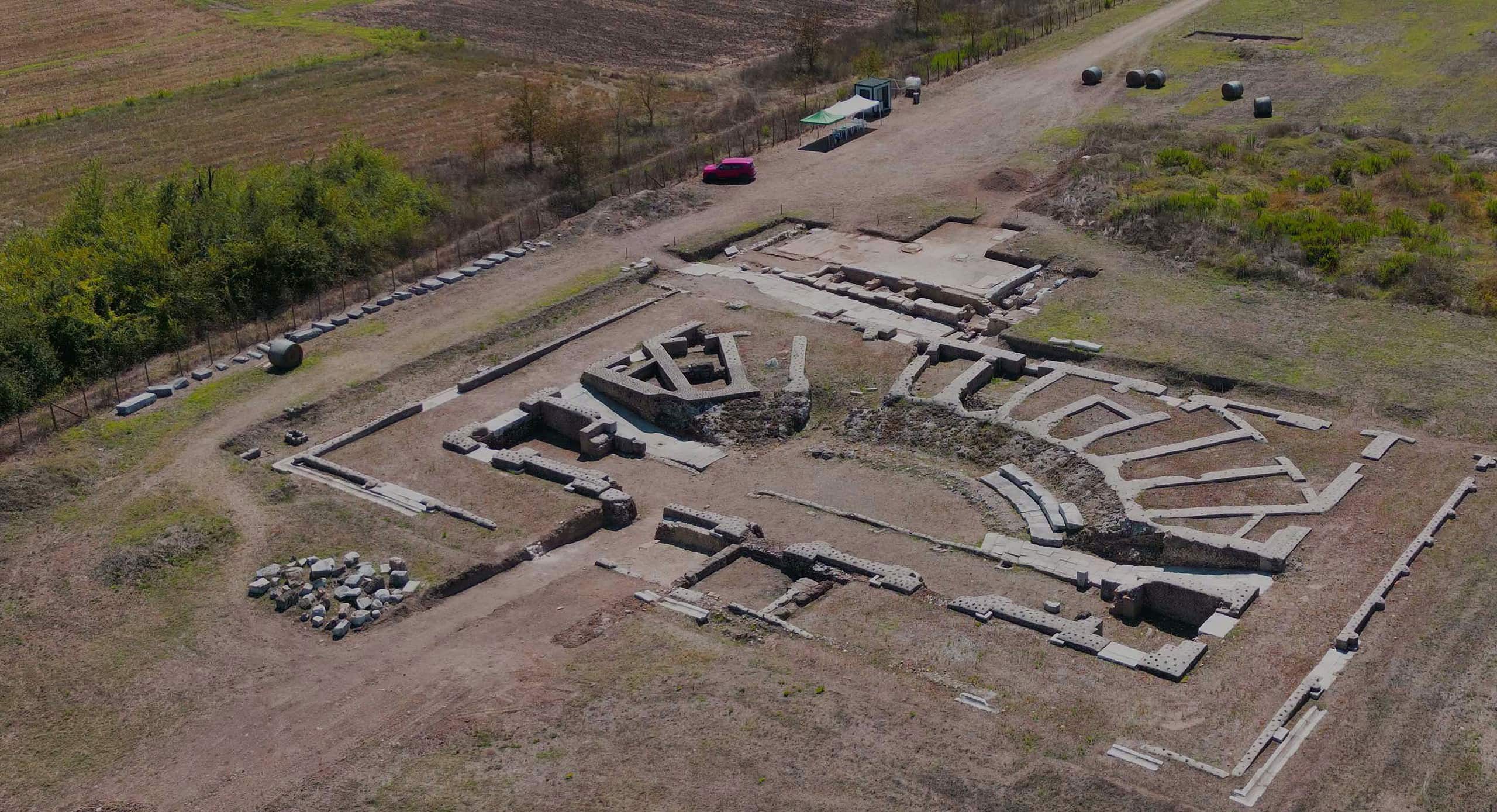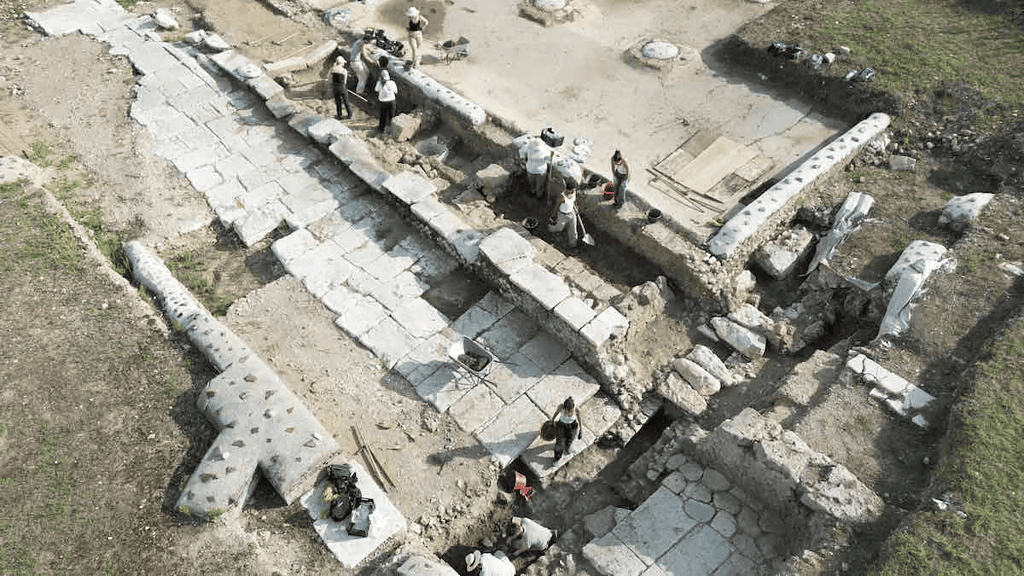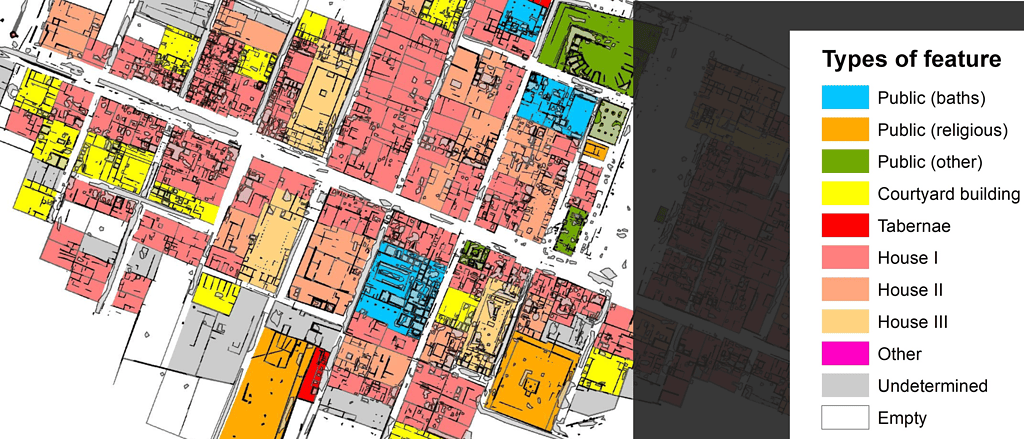
- 🏛️ “Interamna Lirenas,” once dismissed as an insignificant Roman backwater, revealed sophisticated bath complexes and a large theatre.
- 🎭 The roofed theatre could have hosted 1,500 people, suggesting wealth and vitality rather than decline and challenging traditional narratives of the Roman Empire’s fall.
- 🤔 The discovery implies that many similar settlements might exist, potentially reshaping our understanding of the Roman Empire’s history and its decline.
It’s hard to find an unpromising Roman site in Italy, but that’s exactly what “Interamna Lirenas” seemed to be. The settlement housed 2,000 people at its peak and was dismissed as a failed backwater in Central Italy. But a new look at the town’s pottery found that it continued to thrive for centuries. Furthermore, a geophysical survey showed the signs of an active city, contradicting theories on how the Roman Empire fell.
The Roman Empire was arguably the most impressive ancient civilization — perhaps even the most impressive civilization of all time. Not only did it stretch across a vast territory, but it brought so many innovations into the world that it’s hard to even name them all. The fall of the Roman Empire led to what we now call “The Dark Ages” — that should tell you all you need to know.
By the 3rd century AD, the Roman Empire in Italy was thought to be in a general state of decline. But Interamna Lirenas seems to contradict that.
The area initially started as an unpromising site. There was no evidence of buildings on the surface, nothing striking, just bits of broken pottery. In fact, it seemed so unlikely to contain anything interesting that no one even bothered to excavate it.
“Back in 2010, Professor Martin Millett and I started with a site so unpromising that no one had ever tried to excavate it. That’s very rare in Italy,” says Dr. Alessandro Launaro, the study’s author and Interamna Lirenas Project lead at Cambridge’s Faculty of Classics. It appeared to be a classic backwater town. “But what we discovered wasn’t a backwater, far from it. We found a thriving town adapting to every challenge thrown at it for 900 years.”

The first clues that something was unusual came from the pottery itself. An analysis suggested that the town’s decline began around 300 years later than previously expected. Then, researchers investigated the site in more detail, using a technique called Ground Penetrating Radar.
This type of radar uses electromagnetic waves to detect archaeological structures underground. During their survey, researchers found evidence of a river port, an impressive theatre, elaborate bath complexes and hundreds of densely built houses.
The theatre (around 45 m x 26 m) was roofed, which is already intriguing. It’s also big. It would have been big enough to seat 1,500 people — in a city of only 2,000 people. That doesn’t really sound like a town in distress.
“The fact that this town went for a roofed theatre, such a refined building, does not fit with a backwater in decline. This theatre was a major status symbol. It displayed the town’s wealth, power and ambition,” said Alessandro Launaro. The theater also underwent several generations of repairs, so it wasn’t derelict.
Then, there’s the baths.

The town boasted three impressive bath complexes. The largest one was around 2,400 square meters, almost a half of a football field. This bath complex also featured a sizable swimming pool surrounded by a portico.
Judging by the inscriptions found on the baths, the city benefitted from wealthy members of Roman society who provided support for these complexes. This suggests that, far from being a declining town in the 3rd century, it continued to exist as a significant civic center.
But this is the most interesting part.
Launaro and the archaeologists working on the site don’t believe this town was really all that special. In fact, it could have been very average. If this is the case, there could be plenty of other Roman settlements just like this one, and the fall of the Roman Empire could be very different from what we imagined.
“We’re not saying that this town was special, it’s far more exciting than that. We think many other average Roman towns in Italy were just as resilient. It’s just that archaeologists have only recently begun to apply the right techniques and approaches to see this.”
The findings have been published in a book.









